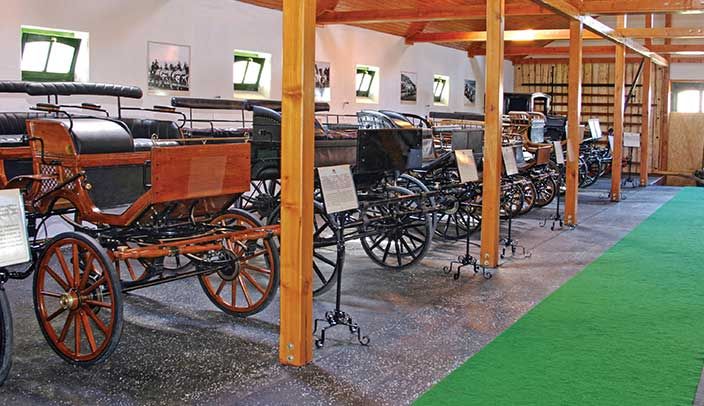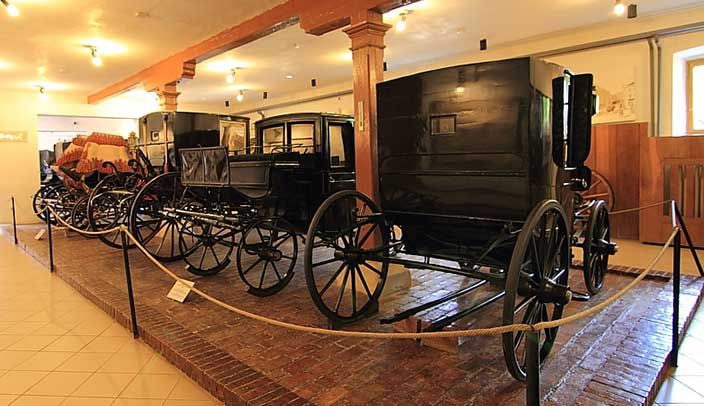Parád-Cifra Stable

In 1763, Ferenc Markhot, the chief medical doctor of Heves County, discovered alum mineral water in the Parád area, which he recommended to be used for medicinal purposes, as a spa treatment. The owner of the area, Baron Antal Grassalkovich, started large-scale constructions on the model of the already famous and fashionable Karlsbad in order to establish the spa. From 1854, the estate became the property of the Károlyi family, who continued construction. With the completion of the Kál-Kápolna-Kisterenye railway line, the accessibility of the area improved a lot, but since the railway station was about 4 km from the spa, the transport of spa guests was handled by the manor's staff. Between 1869 and 1880, György Károlyi had a representative stable and carriage house built according to the designs of Miklós Ybl, which became known as the "Cifra stable" due to its ornate appearance, to accommodate the teeth to a suitable standard. The eclectic-style, U-shaped, gable-roofed, wooden-framed, red-brick building housed a stable covered with marble, and in the central part, master-beam coach houses supported by wooden columns.
After World War I, due to the political involvement of the Károlyi family, the estate was taken into governmental use in 1927, and the building's original purpose was inbackground. After the Second World War, a warehouse was set up in the stables, and student cattle were raised in the carriage sheds. Due to the unworthy conditions, in 1969 the National Horse Breeding Inspectorate was given the right to manage the building, and the renovation of the monument building and its use worthy of its original function began. A representative stud farm was located in the stables, and the carriage history exhibition of the Transportation Museum was located in the carriage sheds.
Since 2018, the State Stud Farm Szilvásvárad has been the manager of the "Cifra stable". In the short time that has passed since then, conservation work has been completed, and in the stables visitors can see traditional Hungarian horse breeds and the carriage history exhibition.
Opened in 1971 on the occasion of the World Hunting Exhibition, in the carriage house, the exhibition halls showing the history of carriage production can be found in the halls of the carriage show, showing the development of carriages, from peasant carts to the most elegant carriages. The driving sleigh, the city sledge, the four-in hand carriage used for hunting, the konflis and the boy's sleigh also found a place here. The most interesting objects of the exhibition are the 19-20. characteristic vehicles of the 19th century, manufactured and used in Hungary. Among the special Hungarian carriages, the so-called Cseklész-type semi-covered "Eszterházy" car, Fót-type "Károlyi" driving car and Kölber-made "Gavallér" car. The State House ornamental carriage was used by the President of the Parliament in the 1896 Millennium Parade. The ornamental carriage of Archbishop Lajos Szmrecsányi of Eger was made by a Viennese carriage manufacturer. The carriage on which the last Habsburg king, IV. He came to the Mátyás Church in Budapest for the coronation of Károly (December 30, 1916).
Opening Hours
For current opening hours, please inquire at the following phone number: +36 (30) 182-6505
You can find our Facebook page HERE
Photo gallery




























